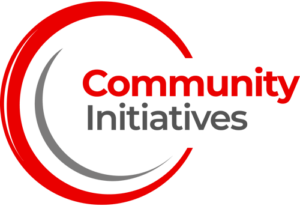
Community Initiatives partnered with the San Francisco LGBT Center to host a workshop September 26 in San Francisco on “How to Start Your Own Nonprofit” to members of the community interested in traditional and alternative ways to serve a community.
At Community Initiatives, we have helped hundreds of advocacy groups, community organizations, after school programs and more to fulfill their missions.
When the SF LGBT Center invited us to teach their community about “How to Start Nonprofit,” our CEO Ruth Williams (pictured right) and Vice President of Client Services Heidi Hernandez Gatty (above) took their collective decades of nonprofit  experience and synthesized it down to a few hours of insight.
experience and synthesized it down to a few hours of insight.
They walked future social change makers through alternative ways to serve a community, as well as the traditional process and maintenance it takes to be a 501(c)(3) nonprofit, tax-exempt organization.
There are plenty of resources on how to start a nonprofit on the internet, some of which are at the bottom of this blog post. Below are some takeaways from the workshop you may not see or hear elsewhere:
Alternative ways to serve a community
To save money, energy and determine if your social solution has merit, you can collaborate with an already existing 501(c)(3) that does similar work. Create a mission statement that includes your cause, your actions and who or what it will impact. Then, approach a similar organization and ask if you could start the work under their program.
There are for-profit options that also allow you to pursue worthy purposes while you return a profit to shareholders. In California, a few examples are social purpose corporations and B-Corps.
And of course, you can partner with a fiscal sponsor like Community Initiatives to share 501(c)(3) status. Not all fiscal sponsors are as comprehensive as Community Initiatives, meaning they do not all support community leaders with payroll, accounting, human resources, legal and other services.
Burn out is real
“Stay sustainable to keep your good ideas going,” Heidi Hernandez Gatty says. “How you think about your business plan helps align your own personal resources and time to be honest about what is achievable and when. This helps you communicate to donors what you actually need.”

Business is business
“You need a business plan. Especially for a nonprofit so you can shift your idea from a good idea to what it may actually look like in the world,” Heidi says.
The business lifecycle of a nonprofit is similar to a for-profit, the major difference being that the assets of the corporation are dedicated to charitable purposes and cannot be used for personal or private gain. When a nonprofit exits, it either has completed its mission, has merged with another nonprofit or it has dissolved.

Know the risks going in
“People don’t usually go into nonprofits to learn about employment law and insurance,” Ruth Williams says. “A lot of risks come up when leaders don’t know what they don’t know.”
Resources
California Attorney General’s Guide for Charities
Natalie Yemenidjian, Communications Manager, natalie@communityin.org
